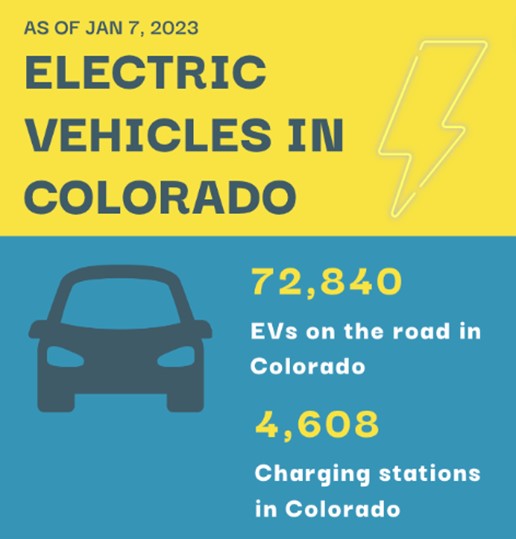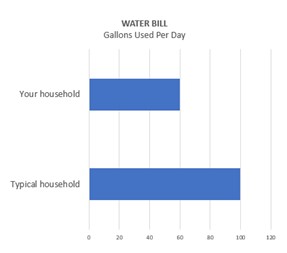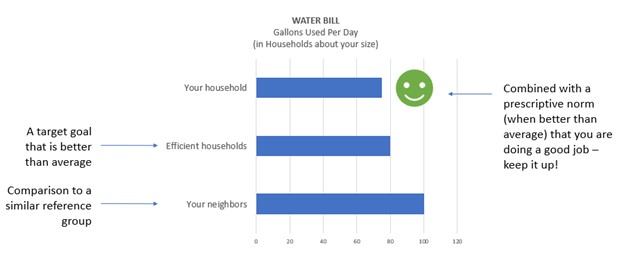Norms & Behavior Change, Part 3: Case Studies
12/12/23 / Jane Klinger
Now that we’ve learned about the power of norms and walked through message crafting, let’s put our normative appeal Spidey-sense to the test. What do you think of the following campaigns?
Case #1
Here’s a real promotional material from the Drive Electric campaign in Colorado:

This one looks pretty good. There’s a large number of people driving EVs in Colorado—maybe I should drive an EV too. One thing to keep in mind, though, is that it can be hard for people to interpret raw numbers without a reference point. 72,840 EVs—is that a lot? A comparison to a few years ago could make that statistic more meaningful, or perhaps to the overall number of cars on the road (if surprisingly high). It’s also worth considering the reference group.
What do you think: Would Coloradans be more persuaded by this local Colorado norm or a by more global norm in this case? A global norm provides evidence from more people, but as we saw, a local norm can be stronger in some cases, especially if that local identity is strong. There’s not always an obvious answer–message crafting is an art!
Case #2
A similar sign was used to discourage the theft of petrified wood… and totally backfired.

They were going for a personal norm appeal: You don’t want to change the natural state of the Petrified Forest, do you? Without elaborating on the personal or prescriptive appeal, though, the main message was the descriptive norm: People steal petrified wood. Seeing the sign, visitors were more likely to see small thefts as acceptable.
Case #3
Another good example is water and energy bills. Perhaps you’ve seen a graph like this, comparing your usage to the norm:

This is a helpful comparison for people to consider. Unfortunately, though, in cases where people’s water usage was better than the average, they found that people took that as a license to coast—and ended up using water more liberally. Here’s a more effective, modern approach:

The most motivating comparison is one that’s slightly better than you, but not so much better as to feel unattainable. In cases where the norm is either unattainable or worse than you, though, an appeal can still be motivating by conveying prescriptive cues, e.g., as the smiley face indicates above.
For a masterfully executed example of normative messaging (appealing to all three norm types, really), check out this short video. Good luck message crafting!
